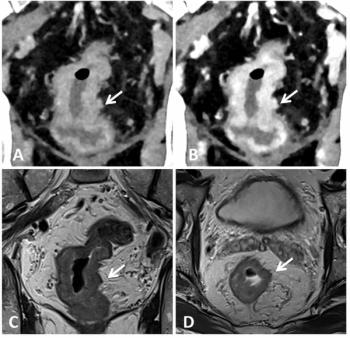
Imaging genomics unveils roots of aggression
An MR-based study has revealed associations between a gene variant and impulsive, violent behavior in humans, particularly males with a history of child abuse. The findings prompted National Institutes of Health director Dr. Elias A. Zerhouni to tout the power of imaging genomics to better understand brain circuitry underlying diversity in human temperament.
An MR-based study has revealed associations between a gene variant and impulsive, violent behavior in humans, particularly males with a history of child abuse. The findings prompted National Institutes of Health director Dr. Elias A. Zerhouni to tout the power of imaging genomics to better understand brain circuitry underlying diversity in human temperament.
Researchers at the National Institute of Mental Health found that a version of a gene previously linked to impulsive-aggressive behavior appears to affect the brain circuits that regulate impulses, emotional memory, and thinking. The gene, known as the violence-related or L version of the enzyme monoamine oxidase-A (MAO-A), is known to shape mood-regulating neurotransmitters such as serotonin.
Structural and functional MRI identified the neural mechanisms that put individuals carrying the L-version gene at risk for developing impulsive and violent behavior. The scans showed that these subjects have relatively small emotion processing, slow impulse control, and fast alarm response brain circuitries, compared with most people. Researchers published their findings online the week of March 20 in the Proceedings of the National Academy of Sciences.
"By itself, this gene is likely to contribute only a small amount of risk in interaction with other genetic and psychosocial influences. It won't make people violent. But by studying its effects in a large sample of normal people, we were able to see how this gene variant biases the brain toward impulsive, aggressive behavior," said principal investigator Dr. Andreas Meyer-Lindenberg.
Previous research had found links between the L version of MAO-A, increased serotonin during development, and violence. A 2002 study, also by NIMH researchers, discovered that men with the L-version gene were more likely to react violently, but only if they had been abused as children.
In the current study, Meyer-Lindenberg and colleagues compared structural and functional brain imaging studies in 97 male and female subjects, including carriers and noncarriers of the MAO-A/L gene, to uncover its neuroenvironmental dynamics.
Structural MRI found that subjects carrying the L-variant gene showed about 8% average volume reduction of mood-regulating neural circuits, such as the cingulated cortex and amygdala. They also found in L-carrying males a 14% volume increase of the orbitofrontal cortex, which regulates motivation and impulses.
Functional MRI revealed subjects with the L-variant gene showed higher activity of the amygdala while performing a task matching angry and fearful faces. Researchers also observed decreased activity in the brain areas that regulate amygdala-related activity, namely the cingulated, orbitofrontal, and insular cortices.
Most of these changes appeared in both men and women, but only L-carrying males showed increased activity in the fear and memory (hippocampus) hubs during a task requiring subjects to remember emotionally negative information. Men with the L-variant gene also failed to activate the cingulated cortex, which inhibits impulsive behavior.
The researchers concluded that the heightened sensitivity of brain circuitry dealing with cognitive inhibition and memory in men with L-variant genes who have been exposed to abuse during childhood seems to create a kind of genetic double jeopardy for impulsive-aggressive behavior.
For more information from the Diagnostic Imaging archives:
Newsletter
Stay at the forefront of radiology with the Diagnostic Imaging newsletter, delivering the latest news, clinical insights, and imaging advancements for today’s radiologists.



























